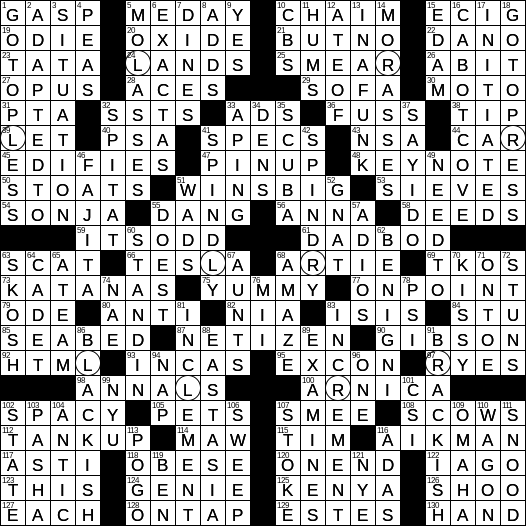Snood Crossword

2 GB RAM. DVD ROM: 8x. Crysis 2 system requirements pc. GPU: NVidia 8800GT 512Mb RAM, ATI 3850HD 512Mb RAM. HDD: 9 GB.
What Is a Snood Scarf? In terms of fashion trends, a snood is basically a tubular scarf, much like a large cowl. The snood is similar to an infinity scarf, which is a looped scarf that sits around the neck. They differ in that the snood sits higher on the neck and can often act like a hood. So while an infinity scarf could technically act like.

definition - Snood (headgear)
definition of Wikipedia
Wikipedia
A snood is historically a type of European female headgear, or in modern times a tubular neck scarf. In the most common form the headgear resembles a close-fitting hood worn over the back of the head. A tighter-mesh band may cover the forehead or crown, then run behind the ears and under the nape of the neck.
A sack of sorts dangles from this band, covering and containing the fall of long hair gathered at the back. A snood sometimes was made of solid fabric, but more often of loosely knittedyarn or other net-like material. Historically (and in some cultures still in use today) a small bag—netted, tatted, knitted, crocheted, or knotted (see macrame)—of fine thread, enclosed a bob of long hair on the back of the head or held it close to the nape.
Modern hair nets, commonly in use where shed human hair may be undesirable, are often made of microfibre. In modern times the word also has come to be applied to a tubular neck protector or warmer, often worn by skiers or motorcyclists. The garment may be worn either pulled down around the neck like a scarf, or pulled up over the hair and lower face, like a hood. The tubular ear and neck protector used to protect the ears of long-eared or long-haired show dogs is also referred to as a snood.
History
The word was first recorded in Old English from sometime around 725.[1] It was widely used in the Middle Ages for a variety of cloth or net head coverings, including what we would today call hairbands and cauls, as well as versions similar to a modern net snood.[citation needed] Snoods continued in use in later periods, especially for women working or at home.[citation needed]
In Scotland and parts of the North of England, a silken ribbon about an inch (2 cm) wide called a snood was worn specifically by unmarried women, as an indicator of their status, until the late 19th or early 20th century.[1] It was usually braided into the hair.[citation needed]
Snoods came back into fashion in the 1860s, although the term 'snood' remained a European name, and Americans called the item simply a 'hairnet' until some time after they went out of fashion in the 1870s. These hairnets were frequently made of very fine material to match the wearer's natural hair colour (see 1860s in fashion - hairstyles and headgear) and worn over styled hair. Consequently, they were very different from the snoods of the 1940s.[citation needed]
Snoods became popular again in Europe during World War II. At that time, the British government had placed strict rations on the amount of material that could be used in clothing. While headgear was not rationed, snoods were favoured, along with turbans and headscarves, in order to show one's commitment to the war effort.[citation needed]
Now, women's snoods are commonly worn by married Orthodox Jewish women, according to the religious custom of hair covering; see shpitzel. Since these snoods are designed to cover the hair more than hold it, they are often lined to prevent them from being see-through. Contemporary hair snoods for Jewish women come in a wide range of colors and designs.
A Winter Olympics 2010 television broadcast (NBC: February 27, 2010) an on-site interview of a European woman skier wearing a beret headgear with snood expansion at the nape.
The Legendary Starfy is a highly polished sidescrolling action game for the Nintendo DS and is a part of one of Nintendo's lesser-known franchises. You heard me right, this is a Nintendo franchise. When talking about Kirby just isn't enough, let's talk about his aquatic buddy Starfy in his only localized release, The Legendary Starfy for DS! To wrap up the Starfy series, we take a look at the series' fifth installment: The Legendary Starfy. This Playthrough will go for 100%, but like always, I will not be collecting Pearls to buy. The legendary starfy wiki. In this stage, you will encounter Konk, a boss who has appeared in every Starfy game. He's really not that tough and has to be damaged by spinning into his exposed body. Just watch out for his. The Legendary Starfy 4 (NDS) - All Bosses (No Damage + Happy Ending) 1080p 60FPS - Duration: 35:04. Rangris 109,373 views.
Tubular scarfs
The term 'snood' (sometimes 'snood-scarf') has been used to describe tubular scarfs since at least the late 1960s. [2]
Beard snood
Another similar garment which is also referred to as a snood is used to cover facial hair when working in environments such as food production.[3] Although it appears that 'hairnet' has replaced snood as the commonly-used term for hair containment on the head, the term 'beard snood' is still familiar in many food production facilities.
Football
Though popular for many years with European footballers like Gianluigi Buffon - in the 2010-11 English football Premier League season, a number of high-profile players including Carlos Tevez and Samir Nasri wore snoods. The fashion was derided by commentators, prompting one journalist to state that 'snoods are the new gloves' in professional football.[4]
Manchester United manager Sir Alex Ferguson said he will no longer allow his players to wear snoods.[5]Arsenal FC manager Arsène Wenger defended their use, suggesting they serve a medical purpose when players have neck problems in the cold weather.[6]
The International Football Association Board feels that snood scarves may pose a risk to a player's neck if jerked from behind.[7] Players in the UK have been banned from wearing them during matches since 1 July 2011. The International Football Association Board had a meeting where the issue was brought up, and they were immediately and totally banned on 5 March, 2011 due to not being part of the uniform.[8]
References
- ^ ab'Snood.' The Oxford English Dictionary. 2nd ed. 1989.
- ^Nadean Walker (August 8, 1968). 'Toque's Back in Headgear'. The Palm Beach Post. http://news.google.com/newspapers?id=2j9RAAAAIBAJ&sjid=pTINAAAAIBAJ&pg=4618,2234099&dq=snood+neck&hl=en.
- ^'SmartGuard Beard Snood Food Industry Workwear Disposable Workwear Protective Workwear Personal Protective PPE'. Protec Direct. http://www.protecdirect.co.uk/Product.asp?I=2044. Retrieved 2011-09-23.
- ^Pink, Stuart (2010-12-10). 'Sir Alex Ferguson in ban on Man United players wearing snoods The Sun News'. London: The Sun. http://www.thesun.co.uk/sol/homepage/news/3269662/Sir-Alex-Ferguson-in-ban-on-Man-United-players-wearing-snoods.html. Retrieved 2011-09-23.
- ^Laura Williamson (2010-12-11). 'Arsenal boss Arsene Wenger: My boys in the snoods suffer from bad necks Mail Online'. London: Dailymail.co.uk. http://www.dailymail.co.uk/sport/football/article-1337623/Arsenal-boss-Arsene-Wenger-My-boys-snoods-suffer-bad-necks.html. Retrieved 2011-09-23.
- ^'Wenger - Snoods are a medical aid for us News Archive News'. Arsenal.com. 2010-12-10. http://www.arsenal.com/news/news-archive/wenger-snoods-are-a-medical-aid-for-us. Retrieved 2011-09-23.
- ^'BBC Sport - Football - Snoods may be banned in football'. BBC News. 2011-02-04. http://news.bbc.co.uk/sport2/hi/football/9387849.stm. Retrieved 2011-09-23.
- ^Agencies (2011-03-05). 'Snoods banned but Fifa to continue goalline technology testing Football guardian.co.uk'. London: Guardian. http://www.guardian.co.uk/football/2011/mar/05/snoods-banned-fifa-goalline-technology. Retrieved 2011-09-23.
External links
This entry is from Wikipedia, the leading user-contributed encyclopedia. It may not have been reviewed by professional editors (see full disclaimer)